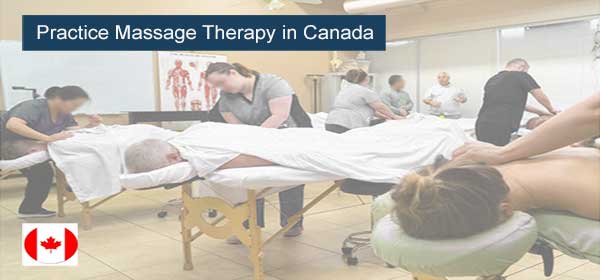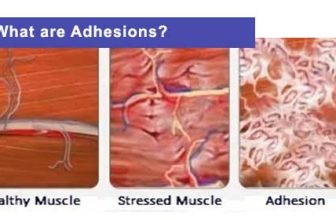
Massage Therapy Licensing & Registration in Canada
In order to practice Massage Therapy in Canada, you usually need the following:
- Education: Complete a program in massage therapy from an accredited school. Massage therapy programs in Canada typically range from 2,200 to 3,000 hours of study, including theoretical knowledge, practical training, and clinical experience.
- Credential Assessment: Submit required documentation to the Massage Therapy College (in a regulated province) or Massage Therapy Association (in unregulated provinces and territories) .
- Required Documentation usually includes:
- Proof of graduation from an Recognized 2200 (or more)-hour Massage Therapy program
- Police Information Check with Vulnerable Sector Search
- Proof of English proficiency (or French profiency in Ontario and Quebec)
- Proof of eligibility to work in Canada
- Professional liability insurance (PLI)
- Proof of Standard or Emergency First Aid and CPR/AED certification level C (or higher)
- (International Applicants) International Education Credential Evaluation: if you were educated outside of Canada, your prior training might have to be assessed by an educational credential evaluation service such as: World Education Services (WES), International Credential Assessment Service of Canada (ICAS), Comparative Education Service (CES), International Qualifications Assessment Service (IQAS), or International Credential Evaluation Service (ICES)
- (International Applicants) Equivalency Exam: if you were educated outside Canada, you might have to pass a Competency Equivalency Exam in order to be accepted by your Canadian territory or province’s massage therapy association.
- Board Examinations: Pass the required certification exams (If you belong to a Regulated Province)
- Registration: Apply for registration with the regulatory body in regulated provinces OR join a professional association in non-regulated provinces.
- Maintain License/Registration: Fulfill any continuing education requirements and adhere to professional standards to maintain your license or registration.
Understand the Massage Therapy Regulatory Framework in your Province: Know whether your province or territory is regulated and what the requirements are.
In Canada, the practice of massage therapy is regulated in some provinces but not in others.
Massage Therapy Regulated Provinces
- British Columbia (BC)
- Newfoundland and Labrador (NL)
- New Brunswick (NB)
- Ontario (ON)
- Prince Edward Island (PE)
These regulated provinces have a regulatory body, often referred to as a College of Massage Therapists, which verifies the qualifications of its members, sets strict rules and protocols to support safety, and determines the competencies of its members.
In the 5 regulated provinces listed above, Massage Therapy is considered a regulated health profession. This means that these provinces have established regulatory authorities (Colleges) which regulate the standards of practice and conduct of massage therapists to protect the public interest.
In the context of massage therapy in Canada, “regulated” refers to the oversight and control exercised by a government-appointed body, often referred to as a College of Massage Therapists. This regulatory body is responsible for ensuring that massage therapists meet certain qualifications and adhere to a set of rules and standards to ensure the safety and well-being of their clients.
RMT Massage Therapist Title in Regulated Provinces
The terms “Registered Massage Therapist (RMT)” and “Massage Therapist (MT)” are protected in the five regulated provinces, meaning it (“RMT” “MT” title) can only be used by individuals who are registered with the regulatory body (the Massage Therapy College) in their province.
In the regulated provinces, if someone falsely claims to be a registered massage therapist or massage therapist, without being a member of the regulatory body, they are considered to be engaging in unauthorized practice. Unauthorized practice is taken seriously as it can mislead the public and potentially put people’s health at risk. The regulatory bodies have measures in place to address illegal practitioners and protect the public interest. This could involve legal consequences, including fines or other penalties for those found using protected titles illegally.
In summary, to become an RMT in a regulated province, one will need to complete the necessary education and training, pass the certification exam, and then apply for registration with the College of Massage Therapy in their (regulated) province. Once registered, one will be able to use the title “Registered Massage Therapist” and will be expected to uphold the standards and ethics of the profession.
Massage Therapy Regulatory Bodies (for the Regulated Provinces) in Canada
- British Columbia (BC): College of Massage Therapists of British Columbia (CMTBC) https://www.cmtbc.ca/
- Ontario (ON): College of Massage Therapists of Ontario (CMTO) https://www.cmto.com/
- Newfoundland and Labrador (NL): College of Massage Therapists of Newfoundland and Labrador (CMTNL) https://www.cmtnl.ca/
- New Brunswick: College of Massage Therapists of New Brunswick (CMTNB) https://www.cmtnb.ca/en/
- Prince Edward Island: College of Massage Therapists of Prince Edward Island (CMTPEI) https://www.cmtpei.ca/
Massage Therapy Non-Regulated Provinces & Territories
- Alberta (AB)
- Manitoba (MB)
- Northwest Territories (NT)
- Nova Scotia (NS)
- Nunavut (NU)
- Quebec (QC)
- Saskatchewan (SK)
- Yukon (YT)
In contrast, in provinces where massage therapy is not regulated by the provincial government, there are usually professional associations for massage therapy that have established standards of practice and acts for the public interest.
In non-regulated provinces, even though technically there is no requirement to register with a regulatory body, most massage therapy jobs require (1) membership with recognized massage therapist’s associations and (2) professional liability insurance. In Canada, many people have massage therapy insurance coverage as part of their health benefits. To be recognized as massage therapy service providers by insurers, massage therapists are generally required to have a (1) professional massage therapy education and training, (2) be a member of an association recognized by the insurer, and (3) complete continuing education periodically.
In non-regulated provinces, there is no centralized college, and massage therapists can belong to a variety of professional associations, each with their own standards. In these provinces, the standards of practice established by the appropriate provincial associations are followed.
***Regulation is being actively pursued in Alberta, Manitoba, Nova Scotia, and Saskatchewan.
List of 13 Provinces and Territories in Canada
- Alberta (AB)
- British Columbia (BC)
- Manitoba (MB)
- New Brunswick (NB)
- Newfoundland and Labrador (NL)
- Northwest Territories (NT)
- Nova Scotia (NS)
- Nunavut (NU)
- Ontario (ON)
- Prince Edward Island (PE)
- Quebec (QC)
- Saskatchewan (SK)
- Yukon (YT)



